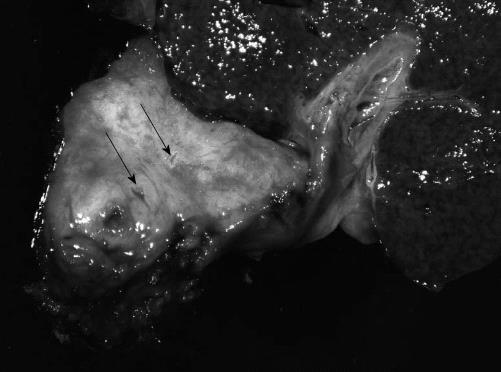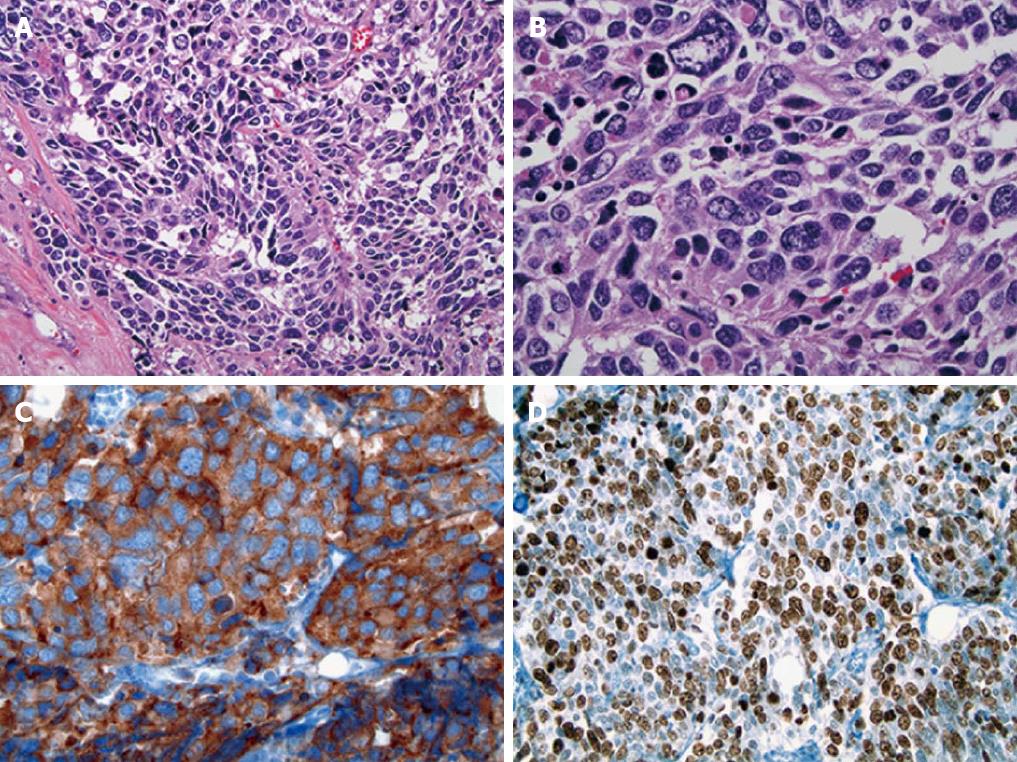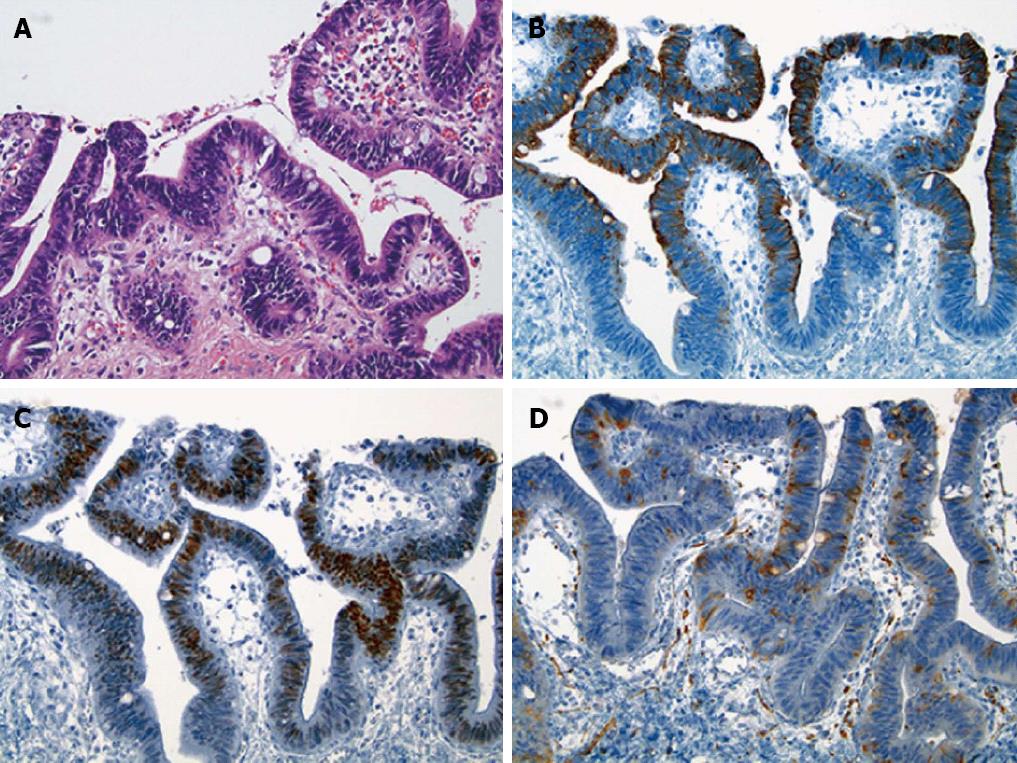Copyright
©2013 Baishideng Publishing Group Co.
World J Gastroenterol. Jul 28, 2013; 19(28): 4616-4623
Published online Jul 28, 2013. doi: 10.3748/wjg.v19.i28.4616
Published online Jul 28, 2013. doi: 10.3748/wjg.v19.i28.4616
Figure 1 Gross appearance of the hilar neoplasm.
The resected specimen showed a firm, tan-grey tumor measuring 5.0-cm in greatest dimension with extensive involvement of the perihilar bile ducts and surrounding soft tissue. Some of the small ducts and vessels within the lesion showed severe luminal narrowing (arrows).
Figure 2 Histologic features of the hilar neoplasm.
A: The tumor cells were arranged in cellular nests and sheets with little intervening fibrovascular stroma [Hematoxylin and eosin (HE), × 200]; B: The tumor cells had a small to moderate amount of amphophilic cytoplasm and medium to large hyperchromatic nuclei with fine to coarse granular chromatin and occasional small nucleoli (HE, × 400); C: The tumor cells were strongly positive for synaptophysin (× 400); D: 70%-80% of the tumor cells were positive for Ki-67 (× 200).
Figure 3 Histologic features of the dysplastic epithelium found in a medium-sized perihilar bile duct located within the invasive neoplasm.
A: The dysplastic epithelium contained some goblet cells [Hematoxylin and eosin (HE), × 200]; B, C: The dysplastic epithelial cells were immunoreactive for CK20 (B, × 200) and CDX2 (C, × 200); D: Some of the dysplastic epithelial cells were positive for synaptophysin with less extensive and weak immunoreactivity compared to the invasive neoplasm (× 200).
- Citation: Sasatomi E, Nalesnik MA, Marsh JW. Neuroendocrine carcinoma of the extrahepatic bile duct: Case report and literature review. World J Gastroenterol 2013; 19(28): 4616-4623
- URL: https://www.wjgnet.com/1007-9327/full/v19/i28/4616.htm
- DOI: https://dx.doi.org/10.3748/wjg.v19.i28.4616











